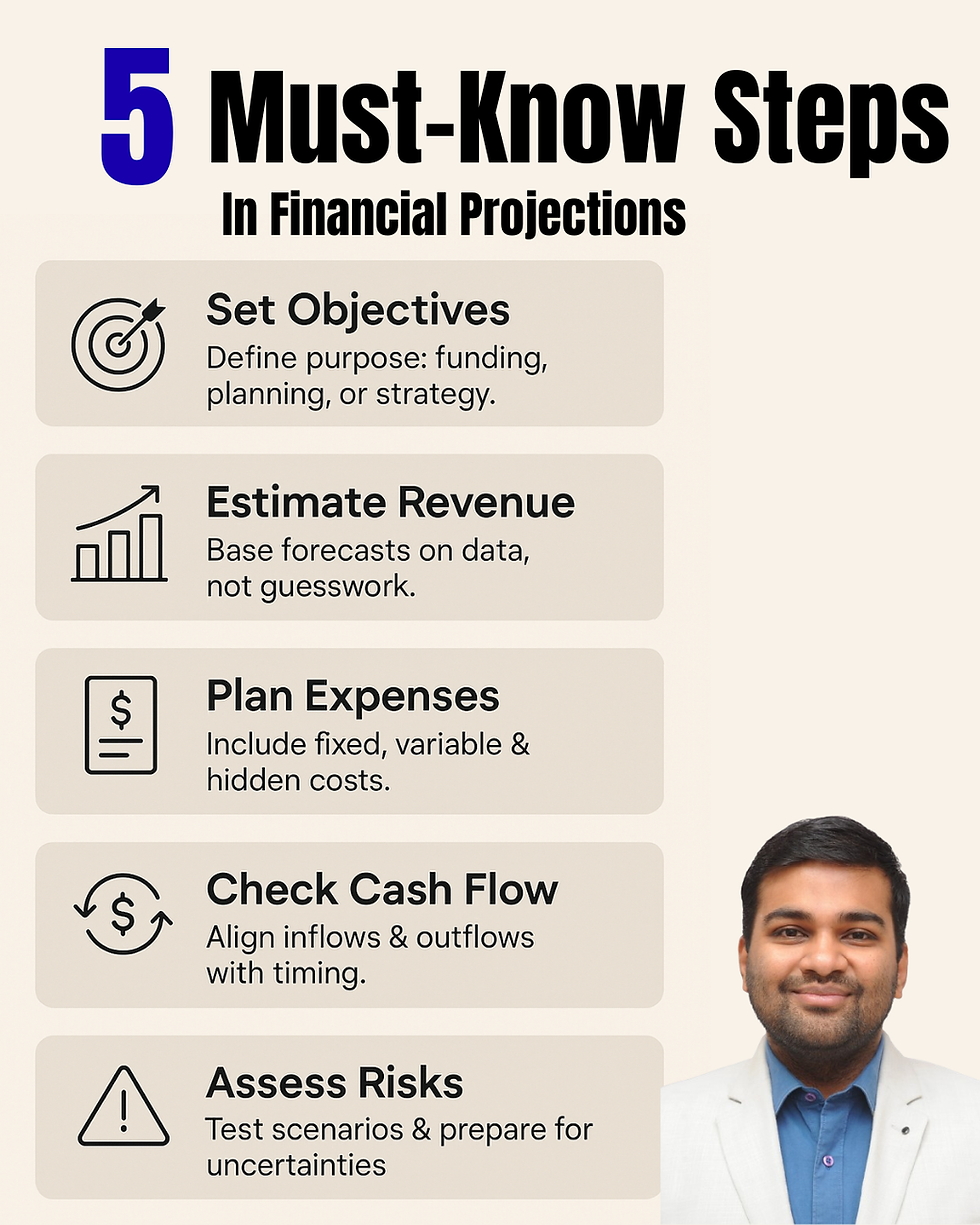Financial Modelling: Beyond Excel, It’s About Capacity + Costs + Cash
- cavishnumanickam
- Sep 8
- 2 min read

When people hear “financial modelling,” they imagine complicated formulas.But formulas are just the skin — the heart of a good model is your business reality. And that reality has two sides: 1️⃣ Capacity & Operations (What you can produce or deliver) 2️⃣ Costs & Cash (What it takes to keep it running)
⚙️ Operational Drivers (The Reality Check)
1. Units in Hand (Inventory)No matter your sales target, you can only sell what’s in stock.
2. Production Capacity (Machines)Your plant’s physical limit defines output. 👉 A machine that produces 10,000 bottles/month sets your ceiling.
3. Service Capacity (People)For service firms, bandwidth = team size & skill. 👉 A 5-member team can handle 20 audits, not 100.
4. Orders in Hand (Pipeline)Forecasts are one thing, signed orders another. 👉 If confirmed orders are ₹5 Cr, you can’t model ₹20 Cr without a big leap.
5. Maximum Order Load (Limit)Every business has a breaking point — restaurant seats, delivery fleet, or working hours.
💰 Financial Drivers (The Hidden Levers)
1. Fixed CostsExpenses that don’t change with volume: rent, salaries, admin. 👉 Even if you sell zero, these burn cash.
2. Variable CostsCosts that move with each unit or service: raw materials, packaging, delivery. 👉 Profit margin depends on how tightly these are controlled.
3. Cash Flow TimingWhen money comes in vs. when it goes out. 👉 A profitable business can still fail if clients pay in 90 days but suppliers need cash in 30.
4. Market FactorsExternal shifts that reshape numbers:
Interest rates (borrowing costs)
Tax changes (affecting bottom line)
Currency rates (for exporters/importers)
How They Connect
Imagine a factory with:
Capacity: 10,000 units/month
Fixed cost: ₹5L/month
Variable cost: ₹200/unit
Selling price: ₹300/unit
If 7,000 units are produced & sold:
Revenue = ₹21L
Variable cost = ₹14L
Fixed cost = ₹5L
Profit = ₹2L
But if orders in hand are only 4,000 units → the same factory runs at a loss.If customers pay late → cash crunch hits despite “profit”.If raw material cost jumps → margins collapse overnight.
That’s the power of capacity + cost + cash drivers together.
The Takeaway
Financial modelling isn’t about predicting the future.It’s about aligning three truths:
What you can deliver (capacity & orders)
What it costs to deliver (fixed & variable)
What cash & market conditions allow
Get these right, and Excel becomes more than a spreadsheet — it becomes your business compass.




Comments